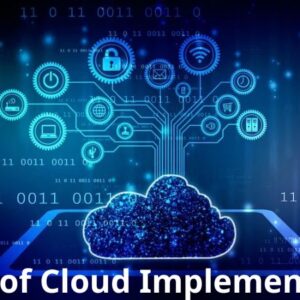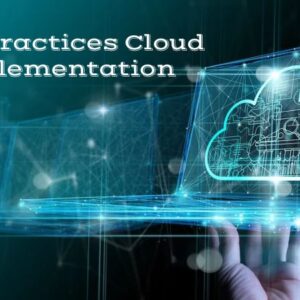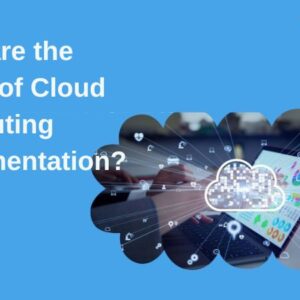In today’s digital landscape, where businesses are increasingly reliant on cloud services for their operations, ensuring robust security across multiple cloud environments has become paramount. With the proliferation of multi-cloud strategies, where organizations utilize services from multiple cloud providers simultaneously, the complexity of managing security risks has amplified. In this article, Crazyhot delve into the intricacies of multi-cloud security and provide a comprehensive guide on how can we implement multi-cloud security effectively across diverse cloud environments.
Understanding the Need for Multi-Cloud Security
As organizations embrace cloud computing to drive innovation, scalability, and flexibility, they often adopt multi-cloud architectures to leverage the strengths of different cloud providers. While multi-cloud offers numerous benefits, including redundancy, vendor diversity, and cost optimization, it also introduces unique security challenges. Each cloud platform has its own set of security features, compliance standards, and management interfaces, making it challenging to maintain a cohesive security posture across all environments.
How can we Implement Multi-Cloud Security?
-
Comprehensive Cloud Security Policy
Establishing a comprehensive cloud security policy is the cornerstone of effective multi-cloud security. How can we implement multi-cloud security without a clear roadmap? This policy should outline security requirements, compliance standards, and best practices for each cloud provider. By defining clear guidelines and expectations, organizations can ensure consistency and alignment across all cloud environments.

-
Risk Assessment and Management
Before diving into implementation, conducting a thorough risk assessment is crucial. How can we implement multi-cloud security without understanding the risks involved? Identify potential security risks and vulnerabilities across all cloud environments, considering factors such as data exposure, compliance gaps, and third-party dependencies. Develop strategies to mitigate these risks and establish protocols for ongoing risk management to proactively address emerging threats.
-
Identity and Access Management (IAM)
Effective identity and access management are paramount in multi-cloud environments. How can we implement multi-cloud security without proper controls over user access? Implement robust IAM controls, including single sign-on (SSO), multi-factor authentication (MFA), and role-based access controls (RBAC), to enforce least privilege access and prevent unauthorized access to sensitive data.
-
Data Encryption
Data encryption is a critical component of multi-cloud security. How can we implement multi-cloud security without safeguarding data from unauthorized access? Encrypt data both in transit and at rest using encryption tools provided by cloud providers or third-party solutions. By employing strong encryption mechanisms, organizations can ensure that sensitive information remains secure, even if breaches occur.
-
Network Security
Protecting the network perimeter is essential in multi-cloud environments. How can we implement multi-cloud security without robust network defenses? Deploy firewalls, intrusion detection/prevention systems (IDS/IPS), and virtual private networks (VPNs) to safeguard against cyber threats and unauthorized access. By implementing layered network security measures, organizations can create multiple barriers to potential attackers.

-
Monitoring and Logging
Continuous monitoring and logging are critical for detecting and responding to security incidents in multi-cloud environments. How can we implement multi-cloud security without real-time visibility into our infrastructure? Implement centralized logging and monitoring solutions to track user activities, detect anomalies, and generate audit trails across all cloud platforms. By leveraging security information and event management (SIEM) tools, organizations can proactively identify and mitigate security threats.
-
Incident Response Plan
Developing a robust incident response plan is essential for effective multi-cloud security. How can we implement multi-cloud security without a coordinated response to security incidents? Define procedures for detecting, responding to, and recovering from security incidents across all cloud environments. Regularly test and update the incident response plan to ensure its effectiveness in mitigating evolving threats.
-
Compliance and Governance
Ensuring compliance with regulatory requirements and industry standards is a priority in multi-cloud environments. How can we implement multi-cloud security without adhering to relevant compliance standards? Implement governance frameworks and conduct regular audits to maintain compliance and accountability across all cloud platforms. By aligning security practices with regulatory mandates, organizations can avoid costly fines and reputational damage.
-
Security Automation and Orchestration
Security automation and orchestration are essential for streamlining security processes in multi-cloud environments. How can we implement multi-cloud security without leveraging automation tools? Automate security provisioning, patch management, and threat response workflows to enforce consistent security policies across all cloud platforms. By reducing manual intervention and human error, organizations can enhance their security posture and efficiency.

-
Employee Training and Awareness
Employee training and awareness play a crucial role in strengthening multi-cloud security. How can we implement multi-cloud security without educating employees about security best practices? Provide ongoing training and awareness programs to educate employees about the risks associated with multi-cloud environments and their role in maintaining security posture. By fostering a culture of security awareness, organizations can empower employees to identify and report potential security threats effectively.
Conclusion
In conclusion, implementing multi-cloud security requires a comprehensive approach that addresses the unique challenges posed by operating across multiple cloud environments. By developing a robust security policy, conducting risk assessments, implementing IAM controls, encrypting data, deploying network security measures, monitoring and logging activities, establishing incident response plans, ensuring compliance and governance, automating security processes, and fostering employee training and awareness, organizations can effectively safeguard their assets in the cloudscape. Embracing these strategies enables organizations to harness the benefits of multi-cloud architectures while mitigating security risks and maintaining a resilient security posture in an ever-evolving threat landscape.





